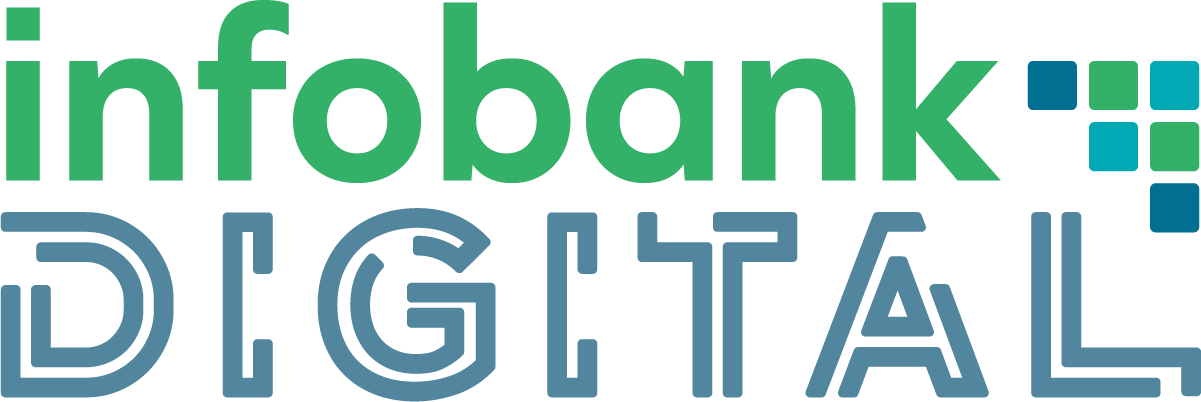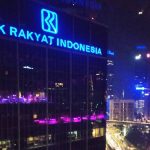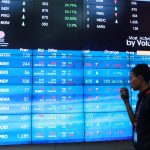By Ryan Kiryanto, Senior Economist and Associate Faculty of the Indonesian Banking Development Institute (LPPI).
Jakarta – In a normal economic, social and political situation in a country, every player in the financial services industry (FSI) – especially banks – is required to always assess the dynamics that occur, both domestically and global/regional.
For example, when there is an increase in risk due to the geopolitical crisis after Russia’s military aggression in Ukraine (last February 2022) and the open war of the Hamas (Palestinian) army against Israel in October this year, all IJK players must conduct a re-assessment of the potential risks that accompany it, such as credit risk, market risk, and liquidity risk.
If the tendency of the re-assessment results turns out to lead to a negative or less conducive conclusion, then it can be accepted by common sense if the attitude and response taken by the IJK tends to be passive, namely restraint or wait and see in boosting credit / financing expansion.
De facto, IJK players – especially banks – are faced with situations and conditions that are not conducive, including the presence of digital innovation and new competitors, as well as high global benchmark interest rates due to a higher inflation position that must be lowered as soon as possible.
The strong view of monetary policy makers and IJK players is currently focused on the hawkish stance adopted by the United States central bank, the Fed, which continues to raise its benchmark interest rate aggressively to the current level of 5.25%-5.50% and has the opportunity to increase one more time by 25 basis points (bps) in November or December to 5.50%-5.75%.
Interest Rate Direction
Indeed, not every Fed policy is responded to and followed by other countries’ central banks. However, at least it is still used as one of the main references before central banks take a stand regarding the determination of the benchmark interest rate.
The Fed’s hawkish stance over the past year has put pressure on the US financial and banking sectors. Several banks that failed to respond quickly and appropriately to the Fed’s move fell one after another, including Silvergate Bank, Silicon Valley Bank, and Signature Bank.
Countless corporations also collapsed due to their inability to respond to the dynamics of the economic environment, especially regarding the aggressive increase in benchmark interest rates. Restructuring programs for medium and large-scale corporations have become the homework of governments in developed countries that are faced with the threat of hard and soft recessions.
Tax relief policies in various areas are also poured out to support the business world to gradually recover and be healthy again as before the COVID-19 pandemic and after (endemic period). Both the US and EU countries arguably stuttered, even failed, in making economic, monetary, and fiscal policies in response to the COVID-19 pandemic and geopolitical risks due to the Russia-Ukraine war.
This stuttering can be seen from the policy prescriptions taken, where central banks tend to prioritize inflation control at the expense of potential economic growth. The results are visible until now, where the inflation rate can be controlled. Inflation in the European Union, which reached 10% last year, has now fallen to around 6.9% and inflation in the US, which had touched 9.1% (June 2021), has now reached 3.4%.
However, the slowdown in inflation is not accompanied by economic growth. Instead, there has been an extreme economic downturn. Take the US, UK, and Germany, which experienced a mild recession last year (minus economic growth to below 1%). Russia is also in the category of countries whose economies have slumped due to the excesses of its war with Ukraine and also the impact of the boycott of European countries and the US against Russia, including boycotts in the financial sector globally.
On the other hand, in developing Asia, inflation was relatively under control (around 4%) with aggregate economic growth reaching 4.5%. In fact, two major Asian economies, India and Indonesia, are capable of recording annual economic growth of 7% and 5% in 2022 and this year, respectively.
Meanwhile, one of the largest economies in Asia, China, is experiencing tremendous pressure due to the choice of pandemic control policies that are “over-killed” through a total lockdown policy during the pandemic in the country.
The policy had an impact on shrinking economic activity, business and investment in the Bamboo Curtain country. Given the size of the country’s economy, the second largest in the world after the US, economic recovery will take a long time.
The recovery process has been made more difficult by the enormous damage to the property sector, mainly triggered by the collapse of the country’s two largest property developers, Evergrande Group and Country Garden. The restructuring of the two major developers in China has certainly weighed on China’s overall economic recovery process.
It is believed that the slackening of the Chinese economy is a dampening factor on global, regional or country-specific economic growth (including Indonesia).
A series of aggressive easing policies in the financial sector were released by China’s central bank, the People’s Bank of China (PBOC), including lowering the benchmark interest rate to 2.5% accompanied by easing the fulfillment of the minimum reserve requirement ratio (GWM) as low as possible.
However, the signals of domestic economic recovery are not yet apparent due to the depth and complexity of China’s economic problems. Moreover, at a time when US-China geopolitical tensions are strengthening and bilateral relations are strained and exacerbated by a total lockdown policy, it turns out that global trade routes to the US are being taken over by its competitors, especially Vietnam. This explains why China’s exports to the US and almost the rest of the world dropped dramatically during the last pandemic.
It also explains why the current US international economic policy has shifted slightly from the previous one with China to Mexico, whose economy has been able to grow relatively better compared to other Latin American countries.
This symptom of divergence and fragmentation of the global economy, which was eventually blamed on the International Monetary Fund (IMF), certainly affects the economic and financial performance of various countries in the world, including Indonesia. This change in the global economic landscape or constellation must certainly be of concern to all economic and financial sector actors wherever they operate.
How to Read
From the explanation above, the way to read the future prospects for all IJK players in Indonesia will at least be related to the following four global trends. First, the macro-economic environment has shifted substantially, with higher interest rates and inflation figures in many parts of the world, as well as the possibility of a continued slowdown in China’s economic growth.
Second, technological advancements and digitization continue to accelerate, with consumers increasingly comfortable with experiences based on advanced technology and digitization. In particular, the proliferation of artificial intelligence (AI) could be a game-changer, boosting productivity levels by 3% to 5% and enabling reductions in operating expenditure.
Third, the government expands and deepens regulatory oversight of nontraditional financial institutions and intermediaries as the macroeconomic system comes under pressure and new technologies, players and risks emerge. Policy normalization in the financial sector should be of particular note to domestic FSI players as the era of policy leniency is coming to an end.
There are also still international regulations – such as Basel III compliance regarding the fulfillment of higher capital requirements for large and medium-sized banks – that must be met. Capital planning is one of the important issues in maintaining the level of bank soundness as required by the authorities because it is directly related to the bank’s risk-taking capacity.
Fourth, the nature of potential systemic risk is shifting due to the re-escalation of geopolitical tensions that increase volatility and spur trade and investment restrictions in the real economy. Global distribution flows are disrupted due to the excesses of continuing wars with widespread multidimensional risks looming.
In the end, the corporation’s ability to generate profits could potentially be disrupted, which could hamper the smooth fulfillment of its obligations to creditor institutions. The threat of non-performing loans (NPLs) has risen, which has prompted banks to increase the ratio of allowance for value depreciation losses (CKPN). This leads to pressure on the profitability aspect of the bank, which is a going concern for investors and shareholders.
If this is the scenario, then the choice of attitudes and policies that are conservative, cautious, and always in line with good governance is the key to success for every IJK in maintaining its performance.
In the midst of the period ahead of the presidential and legislative elections in 2024, it is important for every IJK player to always optimize all five senses so that they are able to capture even the weakest to strongest positive and negative signals so that they can respond in a timely, effective and targeted manner.
The financial projection figures and macro-economic assumptions that have been outlined in the Bank’s Business Plan 2023-2025 and Business Plan 2024 submitted to the Financial Services Authority (OJK) are open to adjustment (read: revision) in accordance with the latest developments in the situation and conditions.
Finally, it takes a calm attitude full of vigilance in responding to internal and external developments by placing the tip of the antenna pole as high as possible so that it has a high sensitivity alarm in reading the signals that blend and milling around in the midst of massive and wild information flows and traffic. (*)













